Jump-starting a car is a task many drivers are familiar with, but doing so in the rain adds an extra layer of concern. You may wonder if it’s safe to handle electrical cables when everything is wet. Fortunately, with proper precautions, jump-starting a car in the rain is possible without significant risk.
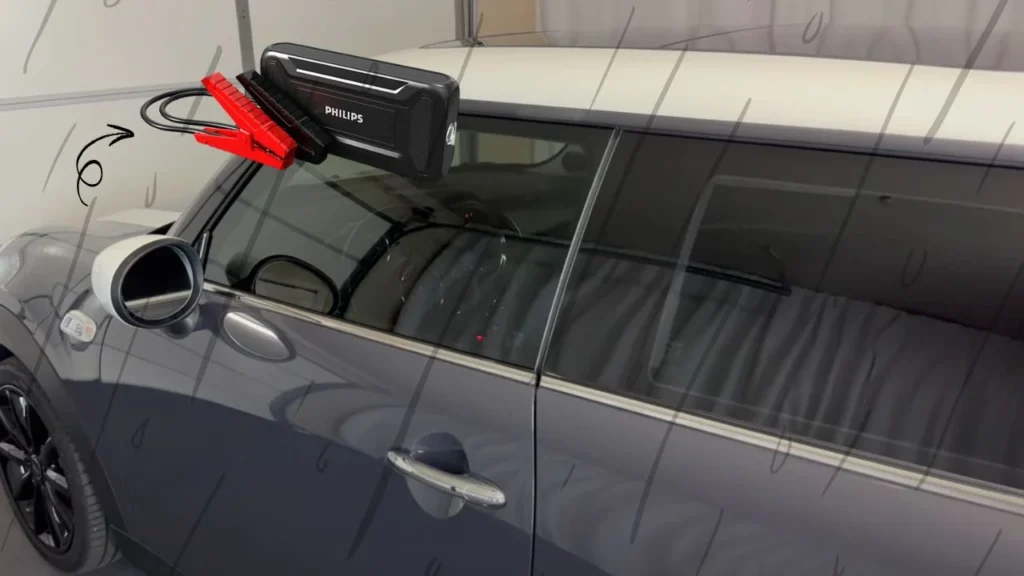
The key factor is the voltage of the car battery. Car batteries typically operate at 12 volts, which isn’t enough to cause serious harm to the human body. However, water and electricity don’t mix well, so it’s important to follow safety steps carefully. You’ll get a detailed guide on can you jump start a car in the rain in the following content.
Is It Safe to Jump Start a Car in the Rain?
Jump-starting a car in the rain is generally safe if you follow proper procedures. Car batteries typically operate at 12 volts, which is not enough to cause serious injury through electrocution. While there might be some minor shocks, these are not dangerous, but handling the cables with care is important. Can you jump-start a car without a battery? Find out in our guide on how to jump-start without a battery.
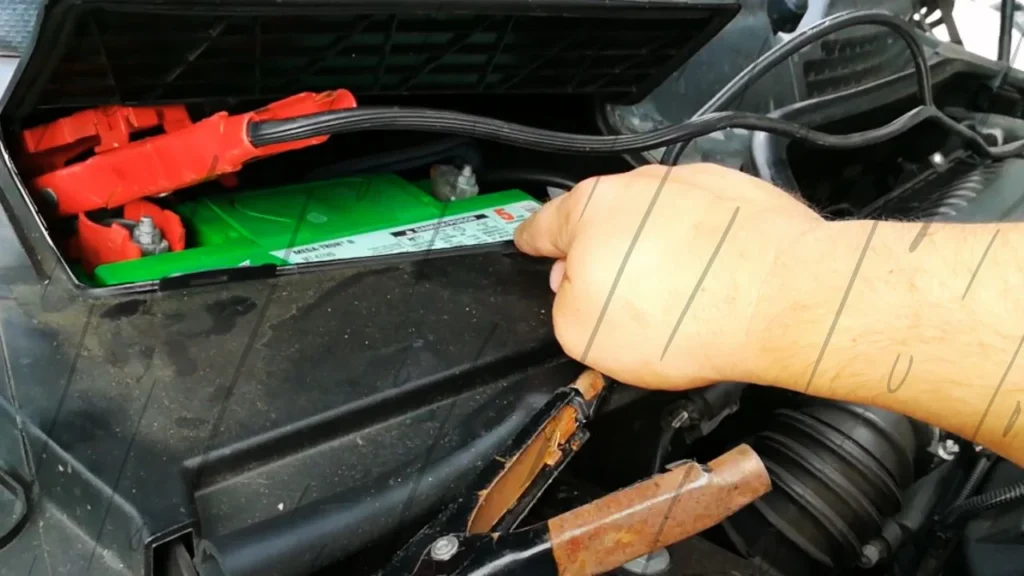
1. Risk of Short-Circuiting
One of the primary risks when jump-starting a car in the rain is short-circuiting. Water conducts electricity, and even a small amount can cause an electrical arc between the jumper cables or battery terminals.
Short-circuiting is particularly dangerous in modern vehicles, as it can damage sensitive electronics like the ECU (Engine Control Unit). To minimize this risk, keep the jumper cables and battery terminals dry by using a waterproof covering.
The voltage from a standard car battery is 12 volts, which is not fatal, but still strong enough to damage car electronics if short-circuiting occurs.
2. Battery Explosions
Car batteries release hydrogen gas when they are charged, which is highly flammable. If sparks occur near the battery during the jump-start, this gas can ignite, causing an explosion. While the probability of a battery explosion is low, it can have severe consequences, including burns or fire damage to the vehicle.
Approximately 2% of car battery failures involve explosive reactions. Always connect the cables in the correct order—positive first, then negative—to prevent sparking, and keep the battery covered to reduce direct exposure to water.
3. Risk of Electrocution
Though car batteries only produce 12 volts of electricity, which is not lethal, the presence of water increases the risk of minor electrical shocks. Water reduces resistance and makes it easier for electricity to travel through the body.
Handling wet cables or standing in a puddle can result in a mild shock, typically around 0.01 to 0.05 amps. Even though these levels are not harmful, the shock can still be uncomfortable and potentially dangerous if you’re startled while holding jumper cables. Wearing rubber gloves and boots, which insulate against electrical currents, can help mitigate this risk.
4. Damage to Vehicle Electronics
Modern cars are equipped with various electronic systems that can be damaged by electrical surges during a jump-start. A typical vehicle battery provides a current between 400 and 600 amps during a jump-start.
An improper connection or surge in electricity can fry components such as the car’s ECU or infotainment systems, leading to costly repairs. On average, repairing or replacing the ECU can cost between $800 and $1,500, depending on the make and model of the car.
To avoid this, follow the correct sequence when connecting and disconnecting the jumper cables and ensure all connections are secure.
5. Corrosion and Long-Term Damage
Water exposure can accelerate the corrosion of battery terminals and cables, which leads to long-term damage. Corroded terminals create resistance, reducing the battery’s ability to maintain a proper charge.
This can lead to more frequent jump-starts or even a complete battery replacement, which can cost anywhere between $100 and $300, depending on the battery type. To prevent corrosion, dry off the terminals after jump-starting and regularly clean them with a wire brush or terminal cleaner. Applying a corrosion inhibitor can also help protect the battery in the future.
6. Risk During Thunderstorms
Jump-starting a car in the rain is generally safe, but during thunderstorms, there is an increased risk of being struck by lightning. Lightning strikes can carry up to 300,000 amps, which can travel through the metal parts of the vehicle, including the jumper cables.
The odds of being struck by lightning are approximately 1 in 500,000, but working with metal tools in a storm increases that risk. It’s advisable to wait until the storm passes before attempting a jump-start in these conditions.
Step by Step guide: Can you jump start a car in the rain?
Jump-starting a car in the rain requires attention to detail and a few extra precautions. While the process is similar to a normal jump-start, you must take steps to avoid electrical mishaps and ensure your safety. Below is a step-by-step guide that breaks the process down into manageable parts.
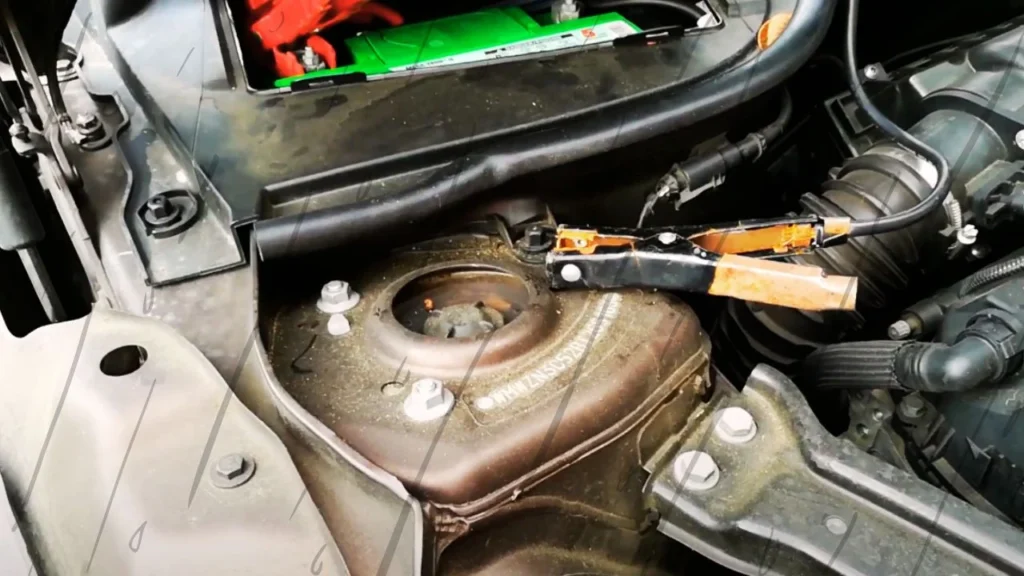
Step 1: Prepare the vehicles
Start by parking the vehicles about 2-3 feet apart, ensuring they do not touch each other. Turn off the engines of both cars and remove the keys. All electrical devices, including the lights and radio, should be switched off to avoid draining power unnecessarily.
Step 2: Attach the jumper cables
Connect the red cable to the positive terminal (+) of the dead battery first, then to the positive terminal of the working battery. Next, attach the black cable to the negative terminal (-) of the working battery. Finally, clamp the other end of the black cable to a metal part of the engine block on the car with the dead battery.
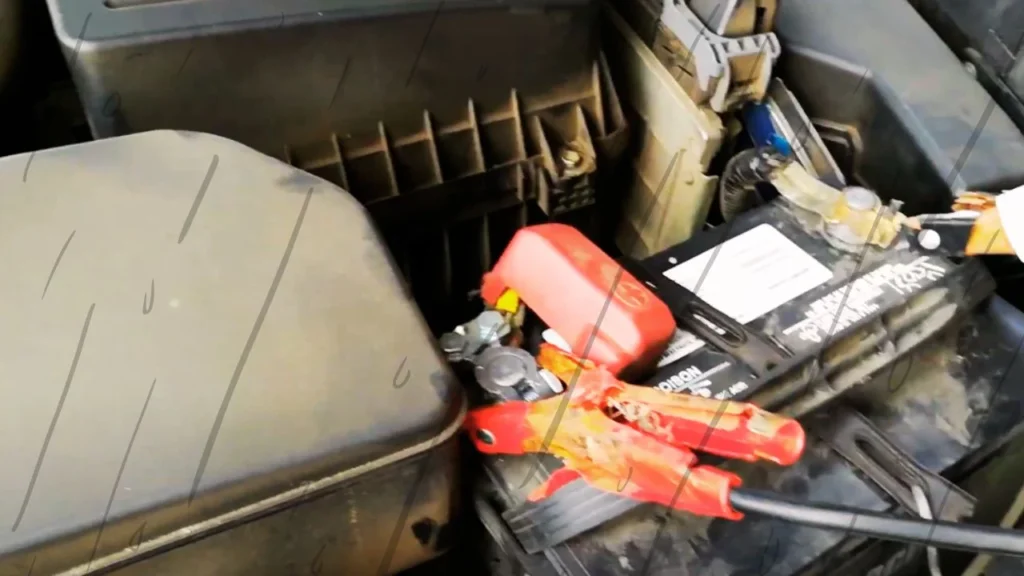
Step 3: Start the cars
Start the car with a good battery and let it run for about 2-3 minutes. Then, try to start the car with the dead battery. If it doesn’t start, wait another 1-2 minutes and try again, ensuring that all connections are secure.
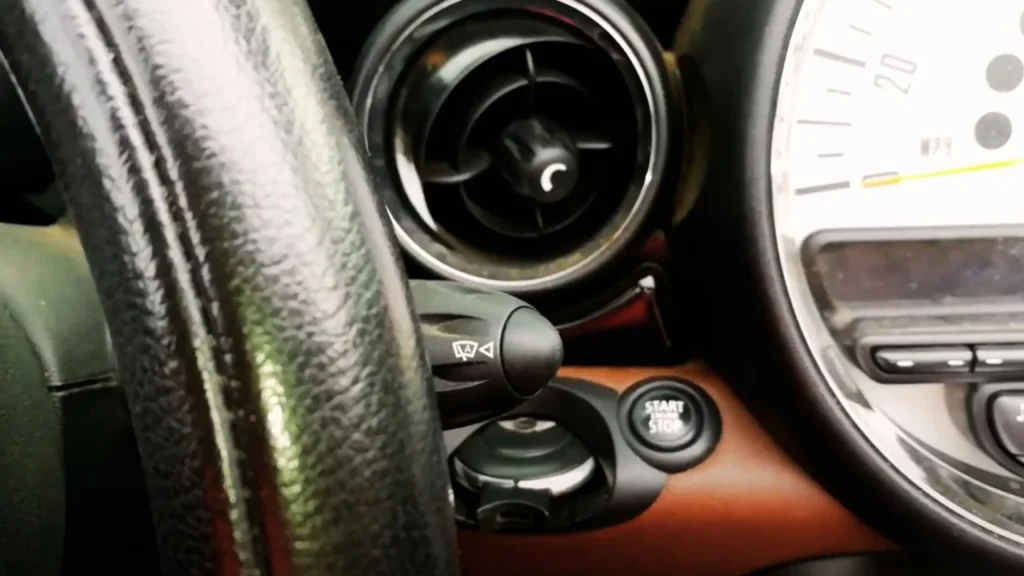
Step 4: Disconnect the cables in reverse
Once the dead car starts, remove the cables in reverse order. First, disconnect the black cable from the engine block and then from the working battery. Finally, remove the red cable from the dead battery, followed by the working battery, ensuring the clamps do not touch.
Curious about the cost of jump-starting a car? Learn more in our article on how much it costs to jump-start a car.
Key Mistakes to Avoid
1. Connecting Cables Incorrectly
One common mistake is connecting the jumper cables incorrectly. Always connect the red cable to the positive terminals first and never mix the terminals, as doing so could damage the battery. This mistake can cause sparks or even a short circuit, which could lead to a battery explosion.
2. Letting Jumper Clamps Touch
Another frequent error is allowing the jumper cable clamps to touch each other during the process. This can create dangerous sparks, especially when both cars are running, which increases the risk of short-circuiting. Always keep the clamps apart and attach them carefully.
3. Not Cleaning the Battery Terminals
Lastly, failing to clean the battery terminals can prevent a successful jump-start. Corrosion buildup on the terminals interrupts the connection, reducing the efficiency of the jump. Use a wire brush to clean the terminals before connecting the cables.
Essential Post Jump-Start Actions
- Let the car run: Keep the revived car running for at least 20 minutes to ensure the alternator recharges the battery sufficiently.
- Get the battery checked: Have the battery tested after a jump. If it drops below 12.4 volts, it may not be holding a proper charge and could need replacement.
- Avoid immediate shutdown: Don’t turn the engine off right after the jump. Let the car run longer to stabilize the battery charge and avoid needing another jump soon after.
Dangers of Jump-Starting During a Thunderstorm
Jump-starting a car during a thunderstorm is risky due to lightning. A lightning strike can carry around 30,000 amps, which can cause severe injury if it strikes while you’re handling jumper cables. Though the odds of being struck are low, it’s safer to avoid jump-starting in active storms.
The main danger comes from being outside in these conditions. While the car battery itself is only 12 volts, lightning can leap from nearby objects to metal, potentially carrying up to 300 million volts, increasing the risk of injury.
If you must jump-start a car during a storm, it’s best to wait until the lightning stops or use a portable battery. Cover yourself and the battery to reduce exposure. Need a jump starter for your boat? See our guide on the top boat battery jump starters.
Safety Guide: Can you jump start a car in the rain
Jump-starting a car in the rain can be safe if the correct precautions are taken. By following a set of simple do’s and don’ts, you can reduce the risk of accidents like electric shocks or short-circuits. This safety guide outlines key steps to ensure a smooth and secure jump-start process in wet conditions.
Do’s:
- Wear rubber gloves and goggles.
- Inspect cables for damage first.
- Cover the battery with plastic.
- Ensure secure cable connections.
- Park cars on level ground.
Don’ts:
- Don’t stand in puddles
- Don’t let cables touch
- Don’t rush the connection process
- Don’t jump-start during lightning
- Don’t handle cables with wet hands
Wrap-Up:
The answer to “Can you jump start a car in the rain” is yes, but with proper precautions. By following safety measures such as using protective gear, ensuring secure connections, and avoiding standing water, you can safely jump-start a car even in wet conditions.
However, be cautious of additional risks like lightning during thunderstorms. With the right preparation and awareness, the process remains relatively straightforward, allowing you to get back on the road with minimal risk.Jump-starting a car is a task many drivers are familiar with, but doing so in the rain adds an extra layer of concern. Can a hybrid car jump-start a normal vehicle? Find out in our article on hybrid cars jump-starting normal cars.
